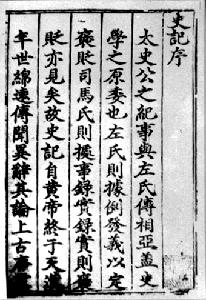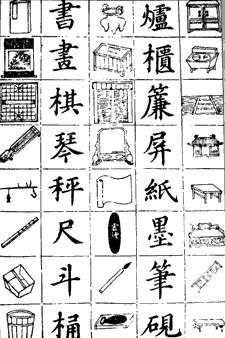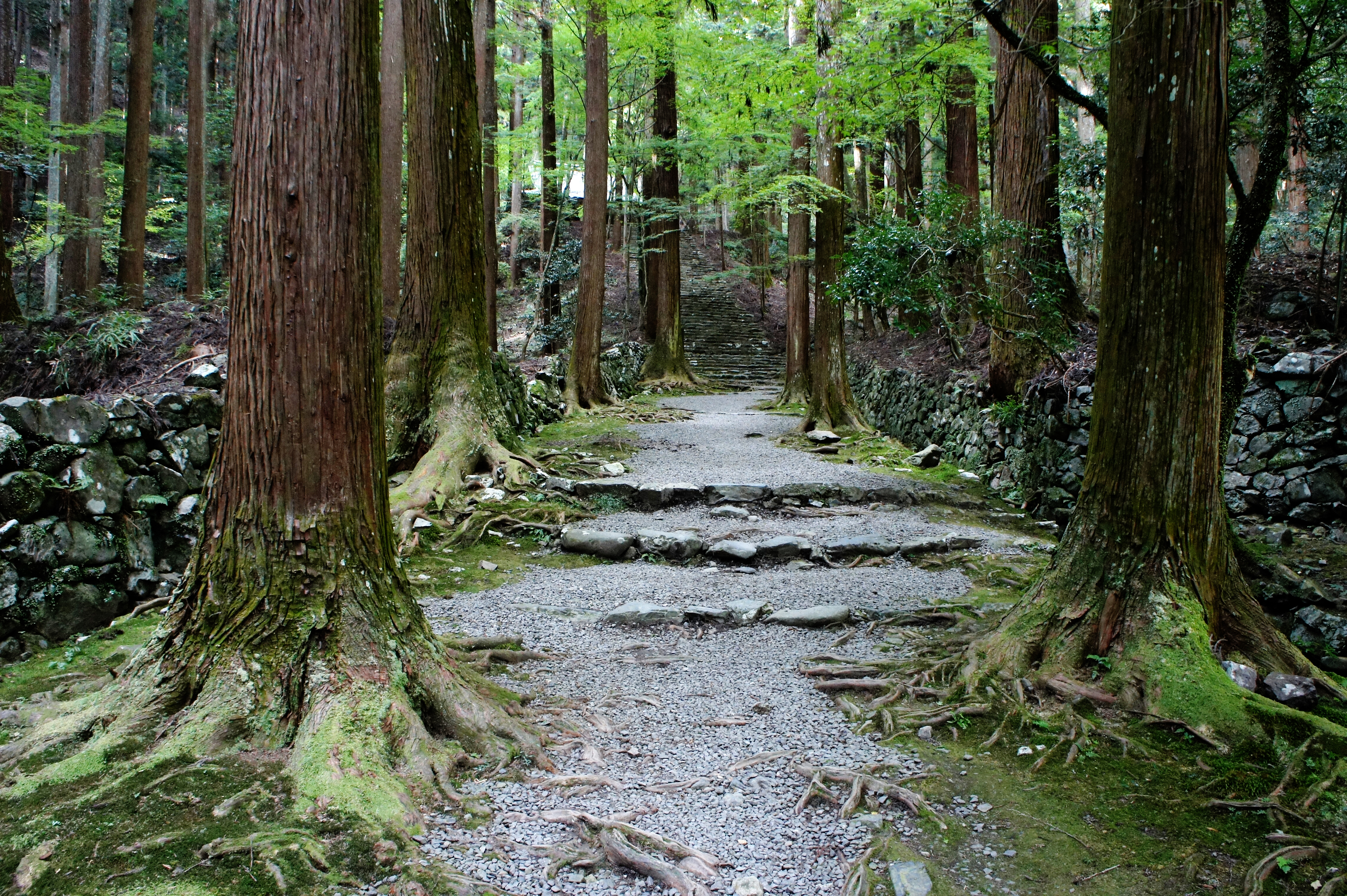|
Records Of The Grand Historian
''Records of the Grand Historian'', also known by its Chinese name ''Shiji'', is a monumental history of China that is the first of China's 24 dynastic histories. The ''Records'' was written in the early 1st century by the ancient Chinese historian Sima Qian, whose father Sima Tan had begun it several decades earlier. The work covers a 2,500-year period from the age of the legendary Yellow Emperor to the reign of Emperor Wu of Han in the author's own time, and describes the world as it was known to the Chinese of the Western Han dynasty. The ''Records'' has been called a "foundational text in Chinese civilization". After Confucius and the First Emperor of Qin, "Sima Qian was one of the creators of Imperial China, not least because by providing definitive biographies, he virtually created the two earlier figures." The ''Records'' set the model for all subsequent dynastic histories of China. In contrast to Western historical works, the ''Records'' do not treat history as "a ... [...More Info...] [...Related Items...] OR: [Wikipedia] [Google] [Baidu] |
Zhonghua Book Company
Zhonghua Book Company (), formerly spelled Chunghwa or Chung-hua Shu-chü, and sometimes translated as Zhonghua Publishing House, are Chinese publishing houses that focuses on the humanities, especially classical Chinese works. Currently it has split into a few separate companies. The main headquarters is in Beijing, while Chung Hwa Book (Hong Kong) is headquartered in Hong Kong. The Taiwan branch is headquartered in Taipei. History The company was founded in Shanghai on 1 January 1912 as the Chung Hwa Book Co., Ltd. () by Lufei Kui, a former manager of the Commercial Press, another Shanghai-based publisher that had been established in 1897. From the year of its foundation to the birth of the People's Republic of China in 1949, it published about 5,700 titles, excluding reprints. Zhonghua's punctuated editions of the '' Twenty-Four Histories'' have become standard. The publishing project, which started in 1959 on a suggestion by Mao Zedong, was completed in 1977. A revised edi ... [...More Info...] [...Related Items...] OR: [Wikipedia] [Google] [Baidu] |
Northern And Southern Dynasties
The Northern and Southern dynasties () was a period of political division in the history of China that lasted from 420 to 589, following the tumultuous era of the Sixteen Kingdoms and the Eastern Jin dynasty. It is sometimes considered as the latter part of a longer period known as the Six Dynasties (220–589). Albeit an age of civil war and political chaos, it was also a time of flourishing arts and culture, advancement in technology, and the spread of Mahayana Buddhism and Daoism. The period saw large-scale migration of the Han people to the lands south of the Yangtze. The period came to an end with the unification of all of China proper by Emperor Wen of the Sui dynasty. During this period, the process of sinicization accelerated among the non-Han ethnicities in the north and among the indigenous peoples in the south. This process was also accompanied by the increasing popularity of Buddhism ( introduced into China in the 1st century) in both northern and sout ... [...More Info...] [...Related Items...] OR: [Wikipedia] [Google] [Baidu] |
Chinese Characters
Chinese characters () are logograms developed for the writing of Chinese. In addition, they have been adapted to write other East Asian languages, and remain a key component of the Japanese writing system where they are known as '' kanji''. Chinese characters in South Korea, which are known as '' hanja'', retain significant use in Korean academia to study its documents, history, literature and records. Vietnam once used the ''chữ Hán'' and developed chữ Nôm to write Vietnamese before turning to a romanized alphabet. Chinese characters are the oldest continuously used system of writing in the world. By virtue of their widespread current use throughout East Asia and Southeast Asia, as well as their profound historic use throughout the Sinosphere, Chinese characters are among the most widely adopted writing systems in the world by number of users. The total number of Chinese characters ever to appear in a dictionary is in the tens of thousands, though most are g ... [...More Info...] [...Related Items...] OR: [Wikipedia] [Google] [Baidu] |
Shiji
''Records of the Grand Historian'', also known by its Chinese name ''Shiji'', is a monumental history of China that is the first of China's 24 dynastic histories. The ''Records'' was written in the early 1st century by the ancient Chinese historian Sima Qian, whose father Sima Tan had begun it several decades earlier. The work covers a 2,500-year period from the age of the legendary Yellow Emperor to the reign of Emperor Wu of Han in the author's own time, and describes the world as it was known to the Chinese of the Western Han dynasty. The ''Records'' has been called a "foundational text in Chinese civilization". After Confucius and the First Emperor of Qin, "Sima Qian was one of the creators of Imperial China, not least because by providing definitive biographies, he virtually created the two earlier figures." The ''Records'' set the model for all subsequent dynastic histories of China. In contrast to Western historical works, the ''Records'' do not treat history as "a ... [...More Info...] [...Related Items...] OR: [Wikipedia] [Google] [Baidu] |
Song Dynasty
The Song dynasty (; ; 960–1279) was an imperial dynasty of China that began in 960 and lasted until 1279. The dynasty was founded by Emperor Taizu of Song following his usurpation of the throne of the Later Zhou. The Song conquered the rest of the Ten Kingdoms, ending the Five Dynasties and Ten Kingdoms period. The Song often came into conflict with the contemporaneous Liao, Western Xia and Jin dynasties in northern China. After retreating to southern China, the Song was eventually conquered by the Mongol-led Yuan dynasty. The dynasty is divided into two periods: Northern Song and Southern Song. During the Northern Song (; 960–1127), the capital was in the northern city of Bianjing (now Kaifeng) and the dynasty controlled most of what is now Eastern China. The Southern Song (; 1127–1279) refers to the period after the Song lost control of its northern half to the Jurchen-led Jin dynasty in the Jin–Song Wars. At that time, the Song court retreated south o ... [...More Info...] [...Related Items...] OR: [Wikipedia] [Google] [Baidu] |
Tokyo
Tokyo (; ja, 東京, , ), officially the Tokyo Metropolis ( ja, 東京都, label=none, ), is the capital and List of cities in Japan, largest city of Japan. Formerly known as Edo, its metropolitan area () is the most populous in the world, with an estimated 37.468 million residents ; the city proper has a population of 13.99 million people. Located at the head of Tokyo Bay, the prefecture forms part of the Kantō region on the central coast of Honshu, Japan's largest island. Tokyo serves as Economy of Japan, Japan's economic center and is the seat of both the Government of Japan, Japanese government and the Emperor of Japan. Originally a fishing village named Edo, the city became politically prominent in 1603, when it became the seat of the Tokugawa shogunate. By the mid-18th century, Edo was one of the most populous cities in the world with a population of over one million people. Following the Meiji Restoration of 1868, the imperial capital in Kyoto was mov ... [...More Info...] [...Related Items...] OR: [Wikipedia] [Google] [Baidu] |
Tōyō Bunko
The , or "Oriental Library", is Japan's largest Asian studies library and one of the world's five largest, located in Tokyo. It also functions as a research institute dedicated to the study of Asian history and culture. It has greatly contributed to the development of Asian Studies through the acquisition of books and other source materials as well as the publication of research by Japanese scholars. Presently, the library contains approximately 950,000 volumes which are cataloged linguistically according to Asian, Western and Japanese language materials. History The library had its beginnings in 1917 when Hisaya Iwasaki, former third President of the Mitsubishi Company, purchased the vast private collection of China-related publications of Australian adventurer, journalist, and Republic of China government adviser George Morrison. After the purchase, Iwasaki improved on the collection by increasing the number of classical Chinese, Japanese and western language books. This gave ... [...More Info...] [...Related Items...] OR: [Wikipedia] [Google] [Baidu] |
Kyoto
Kyoto (; Japanese: , ''Kyōto'' ), officially , is the capital city of Kyoto Prefecture in Japan. Located in the Kansai region on the island of Honshu, Kyoto forms a part of the Keihanshin metropolitan area along with Osaka and Kobe. , the city had a population of 1.46 million. The city is the cultural anchor of a substantially larger metropolitan area known as Greater Kyoto, a metropolitan statistical area (MSA) home to a census-estimated 3.8 million people. Kyoto is one of the oldest municipalities in Japan, having been chosen in 794 as the new seat of Japan's imperial court by Emperor Kanmu. The original city, named Heian-kyō, was arranged in accordance with traditional Chinese feng shui following the model of the ancient Chinese capital of Chang'an/ Luoyang. The emperors of Japan ruled from Kyoto in the following eleven centuries until 1869. It was the scene of several key events of the Muromachi period, Sengoku period, and the Boshin War, such as the Ōnin War, ... [...More Info...] [...Related Items...] OR: [Wikipedia] [Google] [Baidu] |
Kōzan-ji
, officially , is a Buddhist temple of the Omuro sect of Shingon Buddhism in Umegahata Toganōchō, Ukyō Ward, Kyoto, Japan. Kōzan-ji is also known as Kōsan-ji and Toganō-dera. The temple was founded by the Shingon scholar and monk Myōe (1173 – 1232) and is renowned for its numerous national treasures and important cultural properties. The Chōjū-jinbutsu-giga, a group of ink paintings from the 12th and 13th centuries, are among the most important treasures of Kōzan-ji. The temple celebrates Biyakkōshin, Zenmyōshin and Kasuga Myōjin, as well as the temple's tutelary Shintō deity. In 1994, it was registered as part of the UNESCO World Heritage Site "Historic Monuments of Ancient Kyoto". History Togano, located deep in the mountains behind Jingo-ji temple, which are famous for their autumn foliage, is considered an ideal location for mountain asceticism, and there have long been many small temples in this location. In addition to Kosan-ji, there have been ot ... [...More Info...] [...Related Items...] OR: [Wikipedia] [Google] [Baidu] |
Dunhuang Manuscripts
Dunhuang manuscripts refer to a wide variety of religious and secular documents (mostly manuscripts, but also including some woodblock-printed texts) in Chinese and other languages that were discovered at the Mogao Caves of Dunhuang, China, during the 20th century. The majority of the surviving texts come from a large cache of documents produced between the late 4th and early 11th centuries which had been sealed in the so-called ' Library Cave' (Cave 17) at some point in the early 11th century. The Library Cave was discovered by a Daoist monk called Wang Yuanlu in 1900, and much of the contents of the cave were subsequently sold to European explorers such as Aurel Stein and Paul Pelliot. In addition to the Library Cave, manuscripts and printed texts have also been discovered in several other caves at the site. Notably, Pelliot retrieved a large number of documents from Caves 464 and 465 in the northern section of the Mogao Caves. These documents mostly date to the Yuan dynasty (1 ... [...More Info...] [...Related Items...] OR: [Wikipedia] [Google] [Baidu] |
Ōtsu
270px, Ōtsu City Hall is the capital city of Shiga Prefecture, Japan. , the city had an estimated population of 343,991 in 153458 households and a population density of 740 persons per km². The total area of the city is . Geography Ōtsu is located on the southern and southeastern shore of Lake Biwa and occupies most of the southeastern portion of Shiga Prefecture. The city is "L"-shaped and stretches along the southwest shore of Lake Biwa, Japan's largest lake. Ōtsu ranges from the densely populated alluvium depressions near the shore of Lake Biwa to sparsely populated hilly and mountainous areas to the west (Hira Mountains and Mount Hiei) and south of the city. Mount Hiei to the east forms the border of the city and Shiga Prefecture with Kyoto. Neighboring municipalities Shiga Prefecture * Kusatsu * Rittō * Kōka * Takashima Kyoto Prefecture *Kyoto *Uji * Ujitawara Climate Ōtsu has a Humid subtropical climate (Köppen ''Cfa'') characterized by warm summers and co ... [...More Info...] [...Related Items...] OR: [Wikipedia] [Google] [Baidu] |
Ishiyama-dera
is a Shingon temple in Ōtsu in Japan's Shiga Prefecture. This temple is the thirteenth of the Kansai Kannon Pilgrimage. History It was constructed around 747 CE, and is said to have been founded by Rōben. The temple contains a number of cultural assets. The temple possesses two fragments of manuscripts of the ''Records of the Grand Historian'' (''Shiji'' 史記), the first of China's 24 dynastic histories, which are the only known extant fragments that pre-date the Tang dynasty (618907). According to literature available at the temple complex, the guardian carvings at Sanmon/Todaimon are by Tankei and Unkei. Allegedly, Murasaki Shikibu began writing '' The Tale of Genji'' at Ishiyama-dera during a full moon night in August 1004. In commemoration, the temple maintains a Genji room featuring a life-size figure of Lady Murasaki and displays a statue in her honor. The temple features as "The Autumn Moon at Ishiyama" ( ') in the ''Eight Views of Ōmi'' thematic series in art ... [...More Info...] [...Related Items...] OR: [Wikipedia] [Google] [Baidu] |



.jpg)







